
How to Use MKE-S15 DS18B20 Waterproof Temperature Sensor: Examples, Pinouts, and Specs
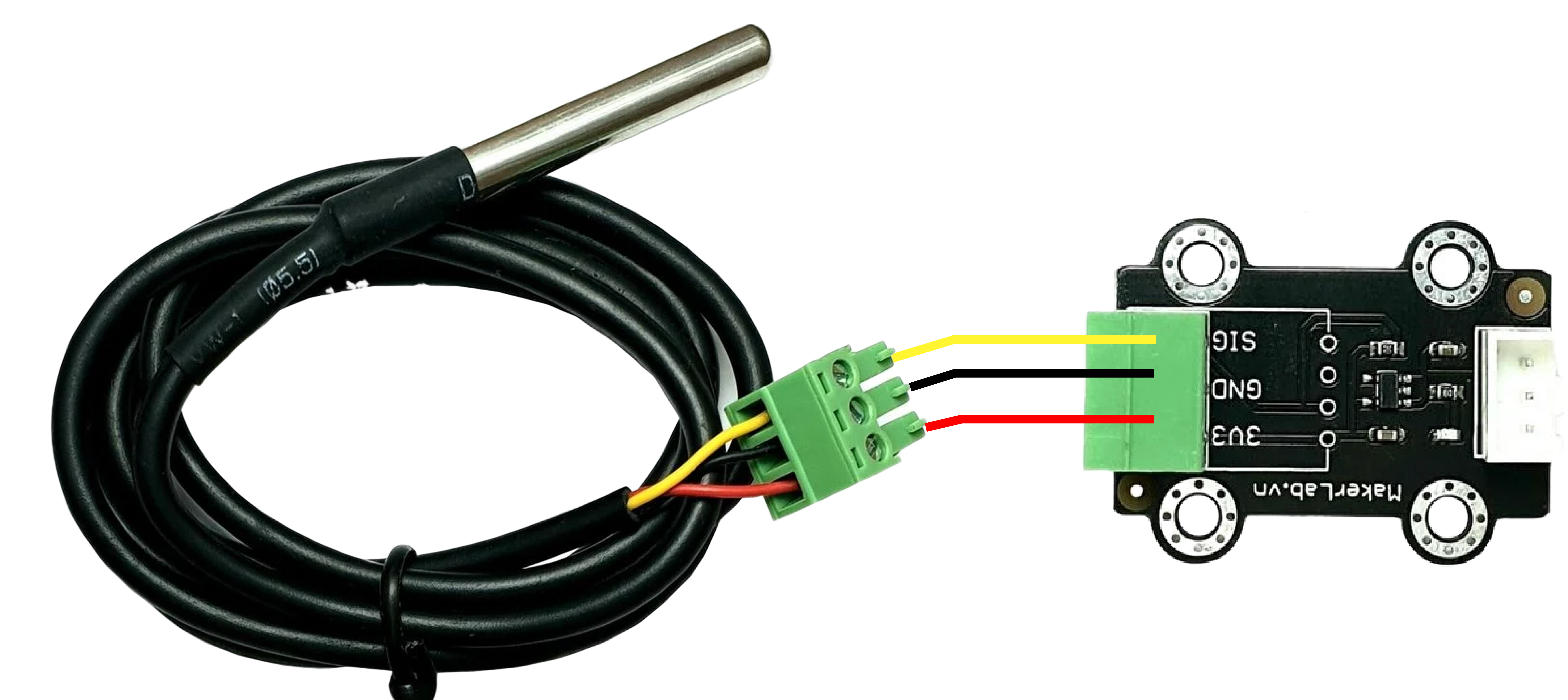
 Design with MKE-S15 DS18B20 Waterproof Temperature Sensor in Cirkit Designer
Design with MKE-S15 DS18B20 Waterproof Temperature Sensor in Cirkit DesignerIntroduction
The MKE-S15 DS18B20 Waterproof Temperature Sensor is a precision digital thermometer that provides temperature readings which indicate the temperature of the device. Encased in a stainless steel housing, this sensor is waterproof and ideal for measuring temperature in liquids and harsh environments. It uses the DS18B20 sensor chip and communicates over a 1-Wire bus that by design requires only one data line (and ground) for communication with a central microprocessor.
Explore Projects Built with MKE-S15 DS18B20 Waterproof Temperature Sensor
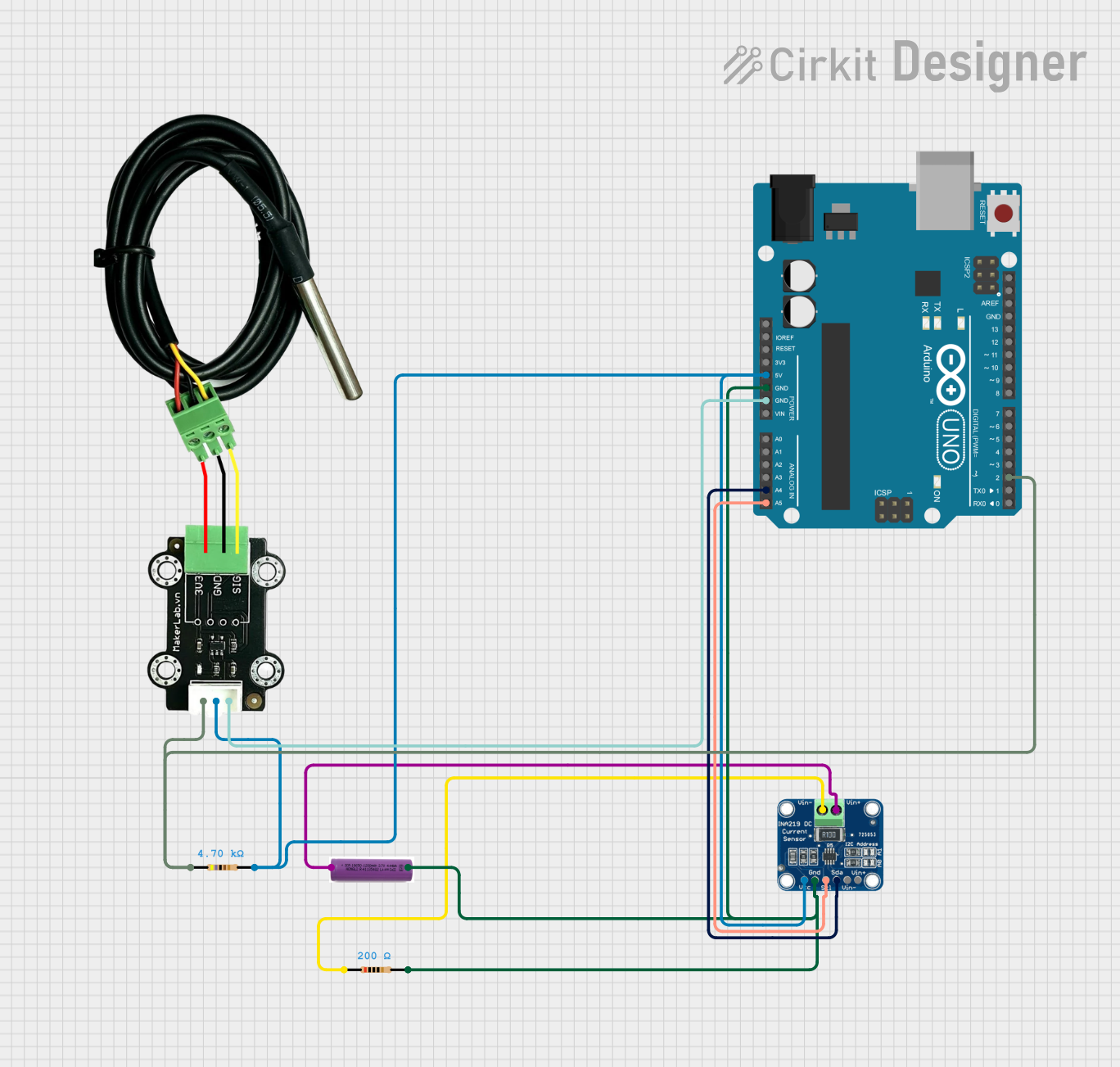
 Open Project in Cirkit Designer
Open Project in Cirkit Designer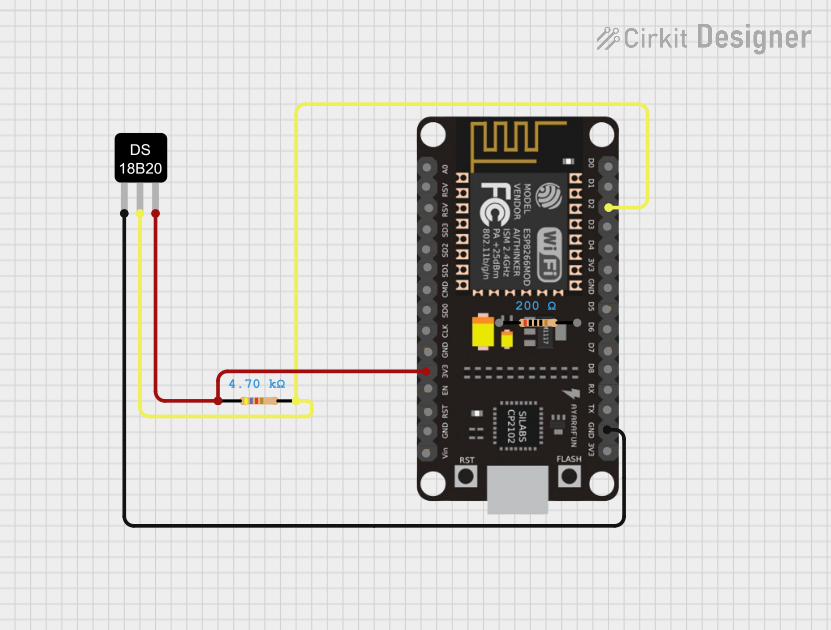
 Open Project in Cirkit Designer
Open Project in Cirkit Designer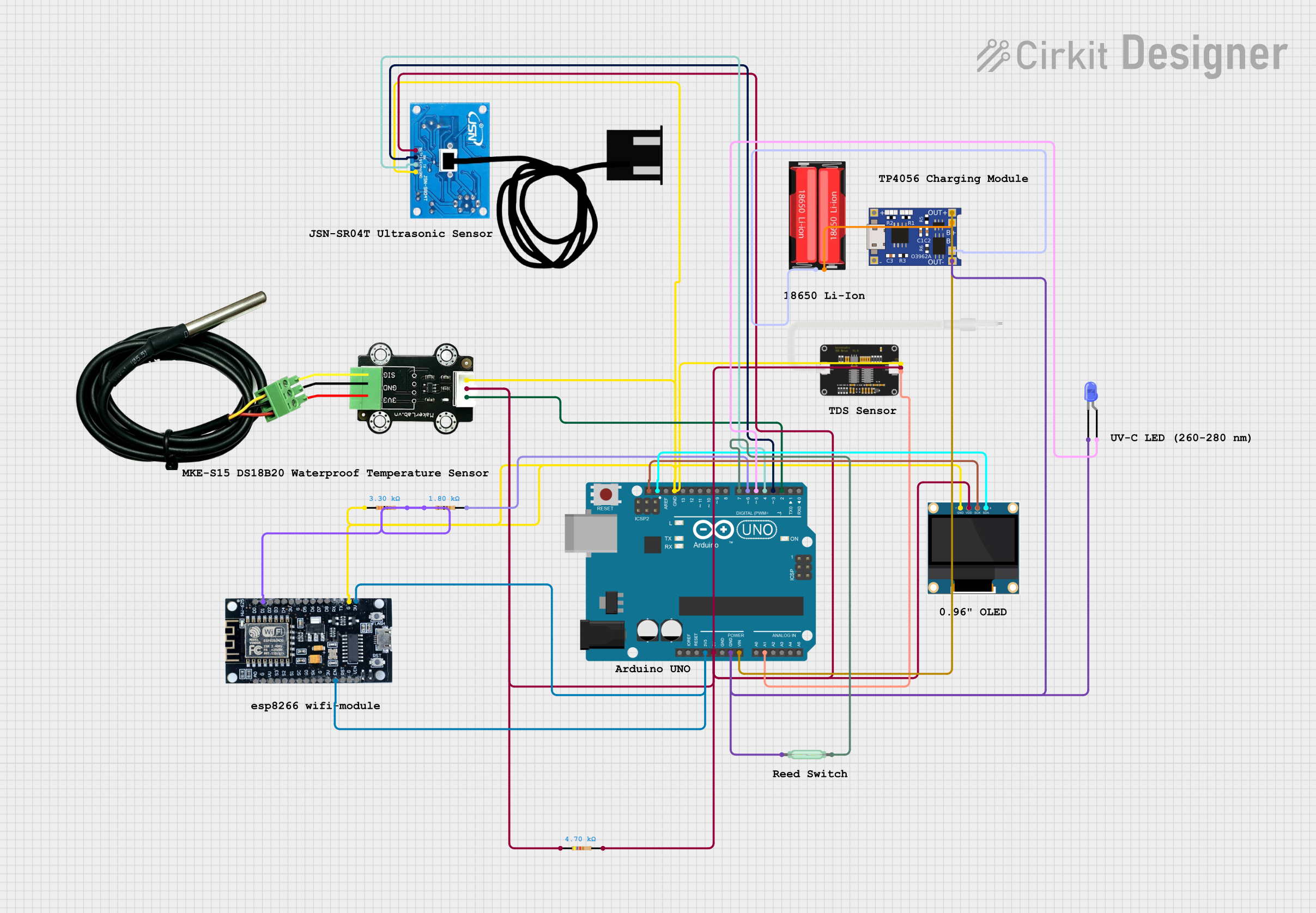
 Open Project in Cirkit Designer
Open Project in Cirkit Designer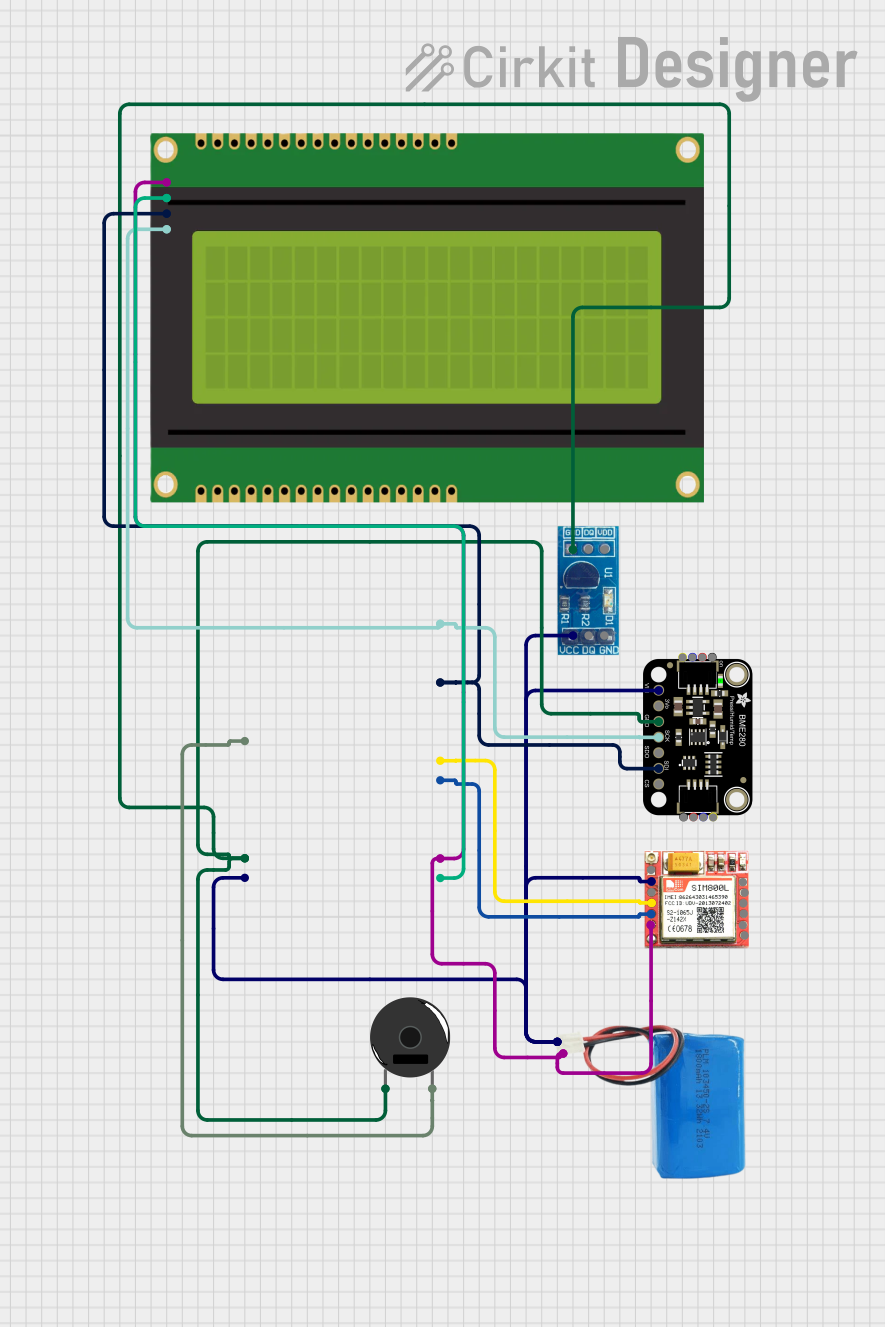
 Open Project in Cirkit Designer
Open Project in Cirkit DesignerExplore Projects Built with MKE-S15 DS18B20 Waterproof Temperature Sensor

 Open Project in Cirkit Designer
Open Project in Cirkit Designer
 Open Project in Cirkit Designer
Open Project in Cirkit Designer
 Open Project in Cirkit Designer
Open Project in Cirkit Designer
 Open Project in Cirkit Designer
Open Project in Cirkit DesignerCommon Applications and Use Cases
- Aquariums and aquatic temperature monitoring
- Industrial systems and process control
- Environmental monitoring
- HVAC systems
- Food and beverage temperature tracking
Technical Specifications
Key Technical Details
- Supply Voltage: 3.0V to 5.5V
- Operating Temperature Range: -55°C to +125°C (-67°F to +257°F)
- Accuracy: ±0.5°C (from -10°C to +85°C)
- Output: Digital signal via 1-Wire bus
- Cable Length: Typically 1 meter (custom lengths available)
- Probe Material: Stainless steel
Pin Configuration and Descriptions
| Pin Number | Description | Color |
|---|---|---|
| 1 | Ground (GND) | Black |
| 2 | Data (DQ) | Yellow |
| 3 | Power Supply (VDD) | Red |
Usage Instructions
How to Use the Component in a Circuit
- Connect the Power Supply (VDD) to a 3.0V to 5.5V power source.
- Connect the Ground (GND) to the ground of the power source.
- Connect the Data (DQ) pin to a digital input on your microcontroller.
- If using parasitic power, tie the VDD pin to ground. Otherwise, provide power to the VDD pin.
- Add a 4.7kΩ pull-up resistor between the DQ line and VDD to ensure proper communication.
Important Considerations and Best Practices
- Ensure that the sensor is not subjected to temperatures beyond its specified range.
- Avoid bending the probe sharply, as this could damage the internal components.
- When using long cable lengths, be aware of potential signal degradation.
- For parasitic power configurations, ensure that your microcontroller can provide sufficient current on the data line.
Example Code for Arduino UNO
#include <OneWire.h>
#include <DallasTemperature.h>
// Data wire is plugged into pin 2 on the Arduino
#define ONE_WIRE_BUS 2
// Setup a oneWire instance to communicate with any OneWire devices
OneWire oneWire(ONE_WIRE_BUS);
// Pass our oneWire reference to Dallas Temperature sensor
DallasTemperature sensors(&oneWire);
void setup(void)
{
// Start serial communication for debugging purposes
Serial.begin(9600);
// Start up the library
sensors.begin();
}
void loop(void)
{
// Call sensors.requestTemperatures() to issue a global temperature
// request to all devices on the bus
sensors.requestTemperatures();
// Fetch the temperature in degrees Celsius for device index 0
float tempC = sensors.getTempCByIndex(0);
// Check if reading was successful
if(tempC != DEVICE_DISCONNECTED_C)
{
Serial.print("Temperature: ");
Serial.print(tempC);
Serial.println("°C");
}
else
{
Serial.println("Error: Could not read temperature data");
}
delay(1000); // Wait 1 second before next reading
}
Troubleshooting and FAQs
Common Issues Users Might Face
- Inaccurate Temperature Readings: Ensure the pull-up resistor is correctly placed and that the sensor is not exposed to rapid temperature changes.
- No Data on Serial Monitor: Check all connections, ensure the correct COM port is selected, and that the baud rate matches the
Serial.beginsetting in your code. - Sensor Not Detected: Verify that the sensor is correctly wired and that the OneWire bus is properly initialized in your code.
Solutions and Tips for Troubleshooting
- Double-check wiring, especially the pull-up resistor on the data line.
- Use the
OneWirelibrary's search function to confirm device presence on the bus. - Ensure that the sensor's stainless steel housing is not in contact with any conductive material that could cause a short circuit.
FAQs
Q: Can I connect multiple DS18B20 sensors to the same microcontroller? A: Yes, the DS18B20 supports multiple devices on the same 1-Wire bus.
Q: How long can the sensor cable be? A: The cable length can be up to 100 meters, but it may require a lower pull-up resistor value for longer distances.
Q: Is calibration required for this sensor? A: The DS18B20 is factory-calibrated and does not typically require additional calibration.